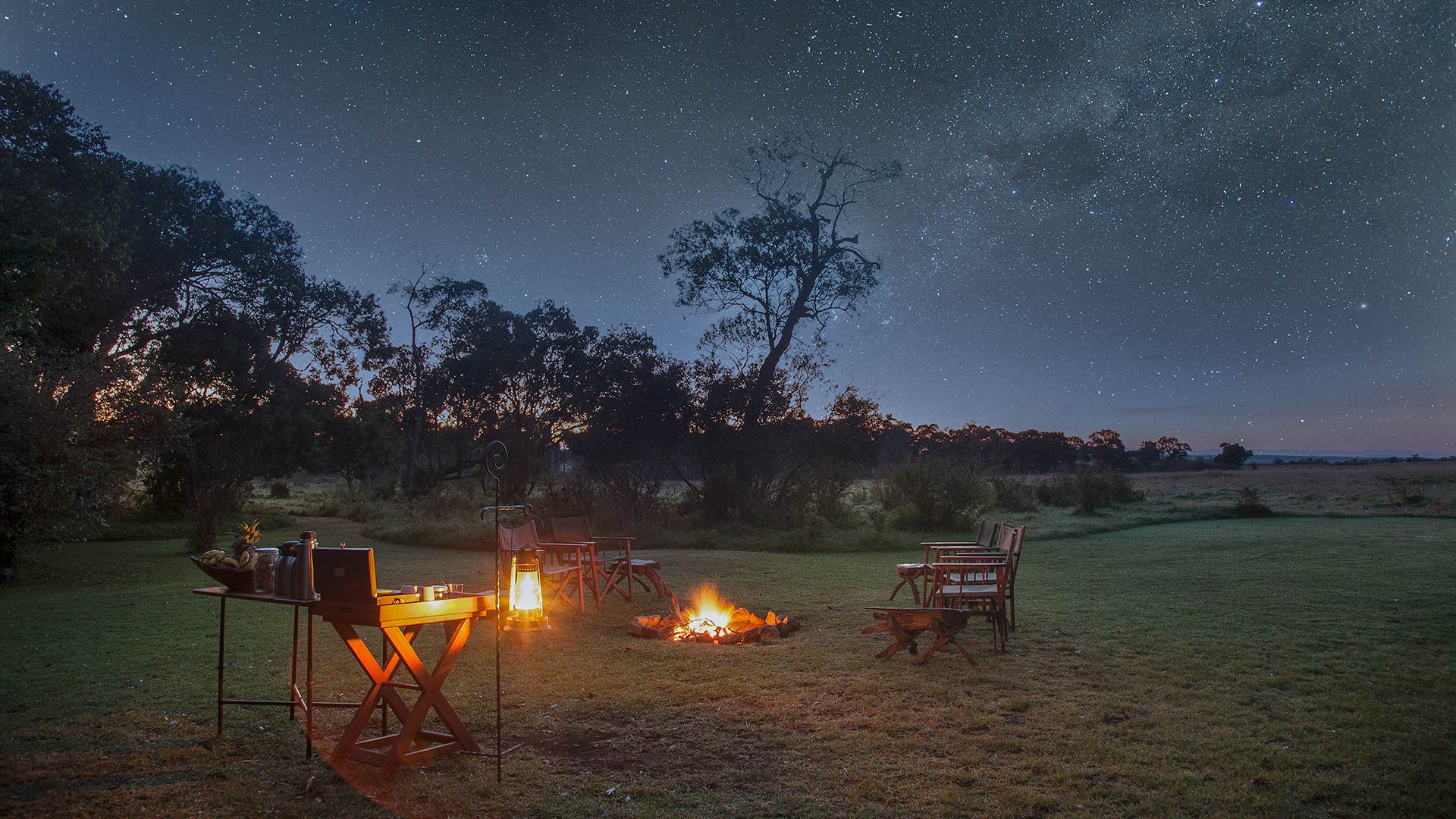Vacations that focus on your mental and physical wellness don’t have to be extravagant trips to far-flung destinations. In fact, the best places to unwind are sometimes hiding in plain sight, right in your own backyard.
From soaking in ancient hot springs in Jordan to stargazing under the darkest night skies in Kenya, here are five wellness-focused trips across the Middle East and Africa, perfect for a Zen-fueled getaway.
As always, check for travel restrictions and closures before planning your trip.
Stargaze in the Kenyan Savanna

Come for the savanna safaris. Stay for the stars. Kenya’s prime location by the equator means dark-sky enthusiasts get to experience the best of both worlds, quite literally: Kenya’s skies showcase both northern and southern constellations to the naked eye.
The country’s varied landscape of semi-deserts, mountains and wildlife reserves guarantees visitors the darkest night skies, free from both light and air pollution.
While there are plenty of opportunities to stargaze in Nairobi and its surrounding wilderness, for true astrotourism aficionados, the ancient site of Namoratunga in northern Kenya awaits. Located 10 miles from Lake Turkana’s western side are 19 pillars made from magnetic basalt, which some hypothesize to be an ancient Eastern Cushitic astronomy site.
Hike the Second Highest Peak in Mauritius

Between the 365-days of sunshine, thriving coral reefs in the turquoise blue ocean waters, and rare flora and fauna that inhabit the island’s endemic forests, it’s hard not to experience oneness with nature in Mauritius.
Part of the Mascarenhas Archipelago of volcanic islands that lies east of Madagascar, this atmospheric Indian Ocean island is small enough that no trip is longer than a 50-minute drive.
The dry season, which runs from June to the end of September, is the ideal time to hike Le Pouce, the island’s second-highest peak. A relatively easy 2.6-mile hike takes you past sugarcane fields and up a grassy, 2,664-foot mountain that towers over both the harbor and Port Louis, the country’s capital. Turn around and sweeping uninhibited views of the entire island await.
Discover 5,000-Year-Old Tombs and Ancient Irrigation Systems in UAE’s Garden City
Nicknamed the Garden City, the eastern city of Al Ain in the emirate of Abu Dhabi is one of the UAE’s most underrated towns for outdoor enthusiasts.
Set on almost 3,000 acres in the center of town is the Al Ain Oasis, one of the UAE’s largest oases. A stark contrast to the desert landscape environs, the oasis has the world’s oldest working falaj, an ancient irrigation system used to water more than 147,000 date palms, as well as fig, mango and other fruit trees, located on the sprawling property.
Bordering Oman in the south is the Jebel Hafit mountain, imposing rugged facades that are home to several archaeological wonders that date as far back as the Neolithic period.
Whether you spend the day hiking, mountain biking or horseback riding, expect glimpses of beehive-shaped tombs that date back 5,000 years, along with unique mountain flora and fauna. You may even spot an endangered Arabian tahr or two if you’re lucky enough.
Explore the Largest Sinkhole and Kayak Thick Forested Mangroves in Qatar

Despite its glistening skyscraper cityscape and larger-than-life shopping malls, the port city of Doha has much to offer those in search of the great outdoors. From ancient sinkholes to mysterious, centuries-old petroglyphs, the arid desert landscapes surrounding Qatar’s capital city are ripe with adventure.
There are plenty of opportunities for outdoor activities, like exploring Musfur Sinkhole, the country’s largest sinkhole and a favorite among local rock-climbing and bouldering enthusiasts. When it comes to the water — there are more than 347 miles of coastline — there’s nothing better than kayaking Al Thakira mangroves, a white mangrove preserve home to flamingos, herons and a plethora of marine life.
On your way back to Doha, be sure to stop by Al Jassasiya, one of the country’s most impressive petroglyph sites. There are more than 800 cataloged rock carvings in hardened sand dunes known as jebels that depict everything from fish and boats to footprints and geometric symbols.
Rejuvenate in Jordan’s Thermal-Rich Waters
An 80-minute drive southwest from Amman’s bustling city center takes you out into the rugged Jordanian desert, where the salubrious hot waters of the Hammamat Ma’in await.
Set in a surprisingly verdant wadi with impressive travertine formations, the Hammamat Ma’in or Ma’in Hot Springs are comprised of a series of 16 terraced natural springs and waterfalls that offer some of the hottest thermal waters in all of Jordan. Thanks to its close proximity to an underground fault, these mineral-rich waters range from 136 F to 143 F.
Spend the day lounging, from one pool to the next — the hot waters have been known throughout millennia for their therapeutic properties in alleviating skin conditions, improving blood circulation and reducing stress. Many locals believe that King Herod the Great used to frequent Hammamat Ma’in for this very reason.




